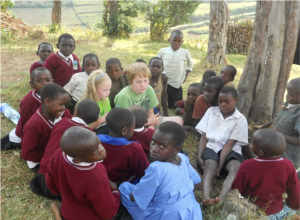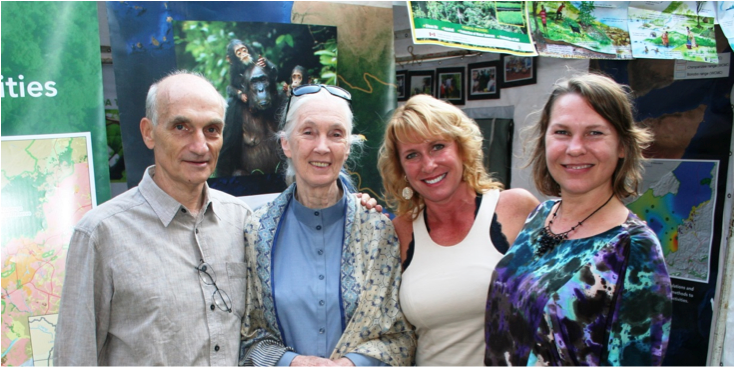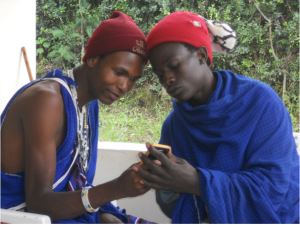Laura Johnson, associate professor of psychology, has been in and out of countries in East Africa since her junior year as an undergraduate at the University of Mississippi, when she spent a life changing year in Kenya.
Most recently, Johnson returned from her second Fulbright research award. In December 2012, she, her husband and their two children took off for 11 months in Tanzania and Uganda. There, Johnson continued her research collaboration with the Jane Goodall Institute and other youth serving organizations, such as the Amani Center for Street Children, Ugandan Youth Rehabilitation Center, and the Mweka Village at the base of Mt. Kilimanjaro. Johnson surveyed over 1,600 adolescents and conducted focus groups to assess youth strengths and assets among school and vulnerable youth.

Johnson’s children accompanied her in the field, often drawing considerable attention. Here they are during data collection with the Batwa ethnic group in Southwest Uganda.
“It was great to meet up with Dr. Jane again in Uganda this year, I first pitched the idea of studying youth in herRoots&Shoots back in 2000 when I was still in grad school,” Johnson said. “My sister Julie and I have been working with R&S since then, it is like a global family.”
New Frontiers with Photo-voice
“New cultures and contexts demand new methods in psychology,” said Johnson. “During the 11 months of research, I faced so many challenges. Keeping youth engaged, working with women not used to sharing their opinions, along with language barriers and cultural differences. With over a decade of research in East Africa, I have conducted a lot of bad focus groups, where basically participants tell you what they think you want to hear.
“Photovoice, developed by Carolyn Wang, was by far the most exciting and effective research tool I discovered. In Photovoice, participants become co-researchers and they take photographic data on different themes. The process was action-oriented, fun, built confidence, and also helped to de-position me as interviewer.”
According to Johnson, the method was successful across different cultures and ages. She has presented her data and on this method to the National Academy of Sciences and the Society for Cross-Cultural Research.
Bringing the Fulbright Full-Circle: UM Student Involvement
Doctoral student Chris Drescher, honor’s student Katherine Westfall, and 5 other UM students helped kick off the research during a study abroad course that Johnson teaches, Psychology 475, Environmental Psychology. These UM students partnered with Tanzanian research partners for cultural games, service, research training and pilot data collection with adolescents.
“It was great to involve UM students in the initial research and now, as we speak in the write up. I am excited to involve students again now on the results side of things and bring this research full-circle, so to speak,” said Johnson.
She encourages students to sign up for the study abroad course in Tanzania and Zanzibar in June 2014.
[youtube]http://youtu.be/Snez_ldo-nI[/youtube]
